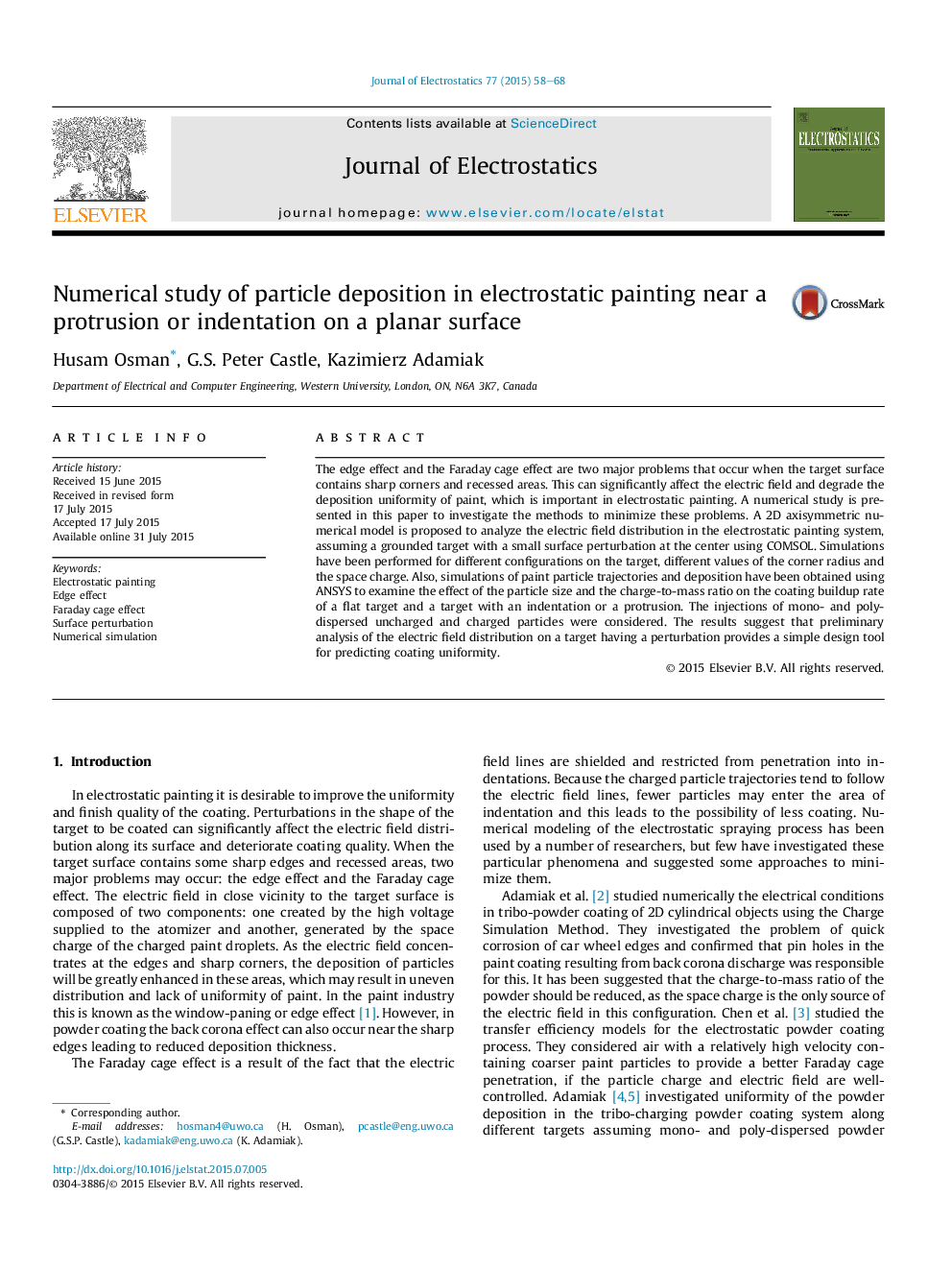| Article ID | Journal | Published Year | Pages | File Type |
|---|---|---|---|---|
| 726476 | Journal of Electrostatics | 2015 | 11 Pages |
•The field value is non-uniform and high at the corners and depends on different parameters, such as the radius of the corner, the radius and height of the protrusion or the depth of the indentation and there is also a direct influence from these parameters on the Faraday cage effect.•Injecting particles of size 35 μm diameter achieves a good compromise between reducing the effect of streamlines of air flow and minimizing the Faraday cage penetration problem as well as the edge effect.•There is very good correlation between the calculated electric field and the predicted values of the deposition thickness on targets with surface perturbation.
The edge effect and the Faraday cage effect are two major problems that occur when the target surface contains sharp corners and recessed areas. This can significantly affect the electric field and degrade the deposition uniformity of paint, which is important in electrostatic painting. A numerical study is presented in this paper to investigate the methods to minimize these problems. A 2D axisymmetric numerical model is proposed to analyze the electric field distribution in the electrostatic painting system, assuming a grounded target with a small surface perturbation at the center using COMSOL. Simulations have been performed for different configurations on the target, different values of the corner radius and the space charge. Also, simulations of paint particle trajectories and deposition have been obtained using ANSYS to examine the effect of the particle size and the charge-to-mass ratio on the coating buildup rate of a flat target and a target with an indentation or a protrusion. The injections of mono- and poly-dispersed uncharged and charged particles were considered. The results suggest that preliminary analysis of the electric field distribution on a target having a perturbation provides a simple design tool for predicting coating uniformity.
